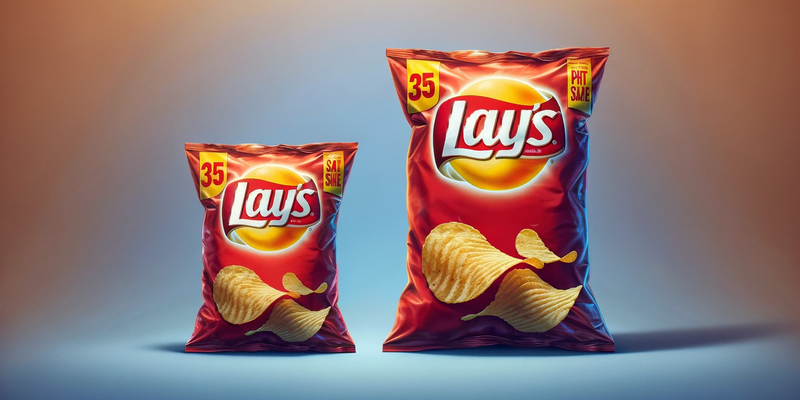
Ever feel like that bag of chips you buy just isn’t as satisfying as it used to be? You’re not alone. In the face of rising production costs and economic pressures, companies are increasingly resorting to a sneaky tactic called shrinkflation.
What Is Shrinkflation?
Shrinkflation is an economic sleight of hand, a cunning strategy where manufacturers reduce the size or quantity of a product while keeping the price constant or even slightly increasing it. It’s like stealthily stealing cookies from the cookie jar, hoping no one will notice there’s less to go around.
Take, for instance, the iconic Parle G biscuits. A decade ago, the Rs.10 packet was generous, filled with enough biscuits to satisfy. Fast forward to today, and the quantity has perceptibly dipped, yet the price tag remains stubbornly unchanged. But why does this happen?
The ‘Why’ Behind Shrinkflation
Companies often resort to shrinkflation as a strategic response to maintain profit margins in the face of rising production costs, supply chain hurdles, or economic downturns. Instead of shocking consumers with price hikes, companies trim down product sizes, hoping the change goes unnoticed.
For example, the well-known anecdote about Lays chips packets, often joked about for having more air than chips, encapsulates consumer frustrations with shrinkflation. This isn’t just about snack satisfaction—it’s a clever economic tactic to balance books on the back of unchanged price tags.
The Consumer Impact: Feeling the Pinch
Shrinkflation isn’t just a corporate headache. It directly impacts consumers’ wallets:
- Reduced Purchasing Power: You’re getting less for your money, meaning you need to buy more to fulfill your needs. This can strain budgets, especially for essential items.
- Value Erosion: We expect a certain value proposition when we buy a product. Shrinkflation chips away at that value, leading to a sense of dissatisfaction and potentially, brand loyalty erosion.
The Market’s Response
In response to consumer pushback, some companies have begun to address shrinkflation transparently, explaining cost pressures and packaging decisions. However, the broader trend continues largely unabated, with companies adjusting product sizes across a range of everyday items, from toiletries to snacks.
The Final Bite: Stay Informed, Shop Smart
So, the next time you pick up a packet of Lays, remember, it’s not just chips and air, but a peek into the economic pressures of our times. While we might chuckle at the memes, understanding shrinkflation helps consumers make more informed decisions and perhaps question whether less really is more.
In the bustling market of goods where every penny counts, being aware of where it goes—whether into the product or into thin air—empowers consumers. Let’s keep our eyes wide open, and maybe, just maybe, we can turn the tide on the shrinking packet saga.
Edited by Rahul Bansal










